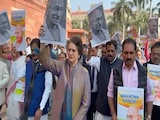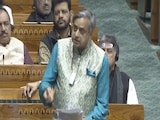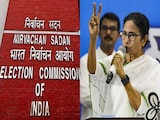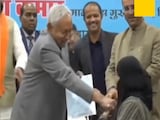Rahul Gandhi's call of "jitni aabadi utna haq" (quota proportionate to strength in population), designed to draw the OBCs (Other Backward Castes), is plagiarised from a slogan first raised by Ram Manohar Lohia in 1956 and adopted by the Samyukta Socialist Party (SSP) in 1961. The Lohiaites asserted, "Sansopa ney baandhi hai gaanth, pichhdey pawen sau mein saath" (SSP has resolved that the Backwards must get 60 percent). The Congress under Jawaharlal Nehru, while sympathetic to the cause of the deprived, did not agree with this caste-slogan being incorporated into political agenda.
In the 1980s, Bahujan Samaj Party (BSP) founder Kanshi Ram modified the Lohiaite clarion: "Jiski jitni sankhya bhaari, uski utni hissedari". Both slogans emerged during Congress rule. The Grand Old Party did not rush to imitate or emulate the chant.
When the Mandal Commission report drove the political discourse in the Janata Dal-National Front days, Rajiv Gandhi, speaking in Parliament as Leader of Opposition on September 6, 1990, questioned the haste with which VP Singh railroaded the decision, provoking strife on the streets (self-immolation by youth included). "Let us not have one man's obstinacy holding India hostage," thundered Rajiv Gandhi, pointing out inadequacies in the Mandal report. Referencing the Indira Gandhi-era slogan "Na jaat par na paat par; Indiraji ki baat par, mohar lagegi Haath par" (Not on caste on creed, Congress will won votes on Indira Gandhi's assurances), Rajiv Gandhi cited a Congress Working Committee resolution of August 30 to underscore his party's stand. He subscribed to economic backwardness, not caste, as the yardstick for reform.
In 2023, there has been no animated intra-party discussion on this. This was reflected in a post on "X" by Congress MP and legal luminary Abhishek Manu Singhvi, who cautioned against a "recipe for majoritarianism". Singhvi later backtracked. Congress circles say he was nudged by the head of the publicity department.
The SSP, which was a leading opposition party in parliament in the initial years of Independence (it merged with the Janata Party in 1977), used the banyan tree as its symbol (it is now frozen by the Election Commission). The banyan is a tree with offshoots. Many offshoots of that banyan tree survive and thrive today - Akhilesh Yadav's Samajwadi Party (founded by his father Mulayam Singh Yadav), Lalu Yadav's Rashtriya Janata Dal, and Nitish Kumar's Janata Dal (United).
By conducting and publishing a caste survey in Bihar, Nitish Kumar, who rose in politics along with Lalu Yadav and Late Ram Vilas Paswan as an activist of SSP's youth wing Samajwadi Yuvjan Sabha (SYS), has magnificently upheld his political legacy.
Rahul Gandhi, by jumping into the caste survey and the "Jitni abaadi utna haq" debate, has departed from Congress's legacy, perhaps on the hope that it may stem the party's downslide since Narendra Modi's emergence. The Congress has retained nearly 20% national votes in the past two polls. Will its bash at a Hindutva agenda, and a Mandal plank, help enhance its base? Or could there be attrition?
Mallikarjun Kharge's anointment as Congress President in March 2022 notwithstanding, Rahul Gandhi, aided by his trusted party general secretary, KC Venugopal, is the pivot of the Congress. No decision can be taken without their say-so. Kharge, who has not even delivered a new set of central office bearers, doesn't seem uncomfortable with this arrangement.
Congress leaders say in private that in 2024, their party will be the fulcrum of an alliance regime. Kharge's name is mentioned as the possible head of that confabulation. Manmohan Singh 2.0 is being conjectured amid talk of Mandal 2.0. For that, Rahul Gandhi is prepared to be flexible, so that glitches do not thwart the "INDIA" alliance.
This flexibility was in evidence during his visit to Amritsar over the past few days. He visited the Golden Temple on a religious visit and participated in rituals of sewa (service) - cleaning shoes, washing utensils, carrying a palanquin, etcetera. A stern statement was issued by Punjab Congress chief, Amrinder Raja Warring, forbidding party workers from trying to contact Rahul Gandhi as he was on a "personal visit". This, at a time leaders of all political parties are busy crisscrossing the countryside for the upcoming election season.
Rahul Gandhi is entitled to his privacy. What irked Punjab party workers was that while their supreme leader was visiting their state, a third term MLA of the party, Sukhpal Singh Khaira, was imprisoned by the Aam Aadmi Party (AAP) regime. There were state-wide protests by the Congress. Rahul Gandhi was oblivious of this. Many former Congress ministers are also facing AAP's offensive. None of the central Congress leaders (who rushed to issue statements protesting the detention of AAP MP Sanjay Singh) reacted to these incidents. Apparently, bonhomie with AAP is more sensible for the health of the "INDIA" alliance.
AAP's tantrums at the first "INDIA" meet in Patna made all fall in line behind Arvind Kejriwal on the Delhi Services Ordinance, the objections of local party units notwithstanding. Home Minister Amit Shah successfully piloted the Bill and the AAP-induced unity failed to yield results.
Reciprocation does not seem to be AAP's credo. When Mamata Banerjee's nephew and Trinamool Congress general secretary Abhishek Banerjee led an agitation on West Bengal's grievances against the Centre on October 2-3 in New Delhi, not a single AAP volunteer was spotted anywhere near them. Trinamool ministers, MPs and MLAs were jostled by the police on Day One and arrested (women MPs like Mohua Moitra were dragged and bodily lifted) on Day Two. No member of the "INDIA" alliance empathised with the Trinamool protestors. The alliance seems to be marked more by its diversity than unity.
The row over the caste census and its aftermath, which has placed Narendra Modi on the crosshairs of the "INDIA" bloc, stems from the fact that the BJP has slowly but steadily usurped the "Mandal" agenda while keeping alive its "kamandal" stance of Hindutva.
In 2009, the BJP polled 22% of the OBC votes, while the Congress was backed by 24%. Regional parties won 54%. After the emergence of Modi, himself an OBC (his caste mooring is among EBCs or Extremely Backward Classes, the lower strata of the OBC spectrum), the BJP's share shot up to 34% in 2014 and 44% in 2019 (Breakup: 40% OBCs and 48% EBCs backed BJP, making an average of 44). The Congress plummeted to 15% in 2014 and 2019. The share of regional parties was 51% and 41%. (Regional parties in this estimation included non-INDIA bloc parties like Biju Janata Dal, YSRCP and BRS, ruling parties of Odisha, Andhra and Telangana, respectively).
To counter the INDIA bloc, Modi has said that the poor are the biggest "caste", entitled to the biggest share. Modi seems to be subscribing to the Marxian "Class" analogy of economic deprivation, as opposed to parties like the Communist members of the INDIA bloc, who are harping on caste. In 1990, Rajiv Gandhi's emphasis on economic backwardness was in a similar vain.
Will Rahul Gandhi's bid to shape his own narrative, differing from his party's legacy, help the Congress reverse its slide in 2024?
(Shubhabrata Bhattacharya is a retired Editor and a public affairs commentator.)
Disclaimer: These are the personal opinions of the author.















